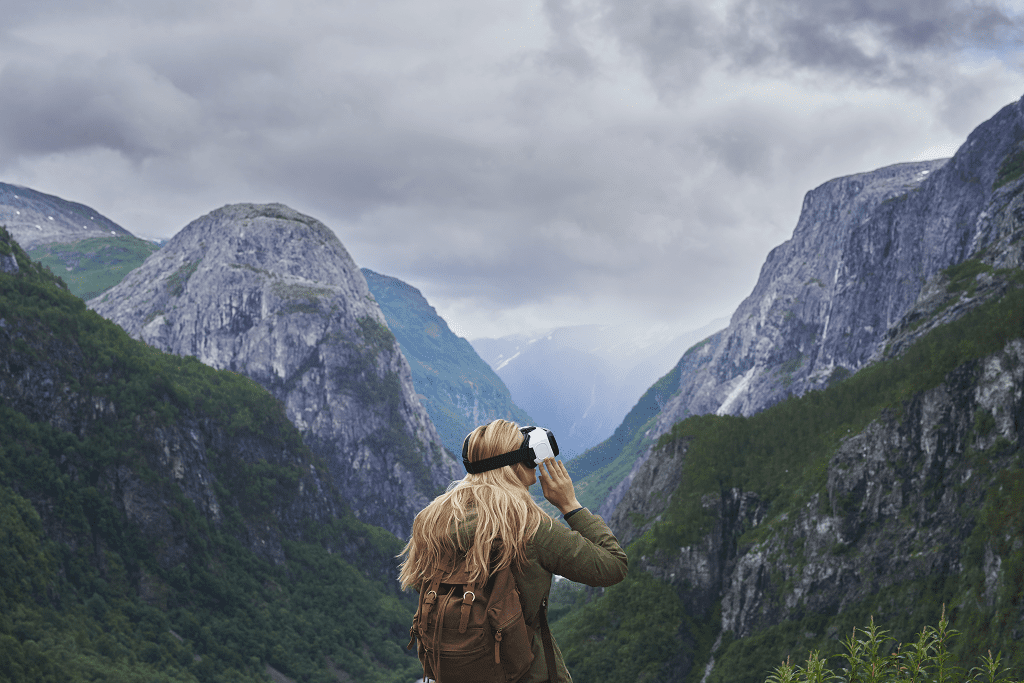Skift Take
It might not be surprising to hear that rich experiences will continue to be high on the lists of travelers in 2019. But there are a few trends that will shape the types of experiences they’ll be looking for.
This sponsored content was created in collaboration with a Skift partner.
Experiential travel isn’t particularly new. There’s been growing demand around culinary travel, cultural exploration, and activity-based travel experiences for a number of years now. But the demand for experiential travel shows no signs of slowing down. Adventurers will continue to hunt for truly local and authentic experiences, whether that’s the best food truck in Portland, the hidden beaches of Madagascar, or textile weaving classes in Peru –– especially as these types of experiences grow more accessible thanks to our smartphones and the ever-increasing number of digital and mobile platforms that make traveling easier.
Here, we look at a few examples of what will drive experiential travel in 2019.
Culinary travel will continue to rise, largely thanks to Instagram: Food is an inherently social and emotional experience, making it an important pillar in experience-based travel. We expect to see more travelers plan their trips around food in 2019, whether that’s food-based activities such as stomping wine grapes in Italy, seeking out the best dim sum in Hong Kong, or exploring the night markets of Singapore.
Social media –– particularly Instagram –– has helped food and drink-based experiences and destinations gain exposure. In 2019, we predict that you will be just as likely to see an Instagram post of a handmade Italian pasta dish as you are an Italian statue. It’s important for destinations to understand the role of food and social media in travel –– and their inherent opportunities.
“Insiders” will help travelers live like locals: Getting the authentic version of a place will be of growing importance to travelers in 2019. Travelers are eager for cultural experiences that are more interactive than gazing through the window of a tour bus. They want to know where the hidden gems are, and they want to connect with the local culture and people. Locals are offering insider tours, and global companies are partnering with local players to up their authenticity (and to tap into the tour guide market valued at $7 billion, according to a November 2017 IBISWorld report). Startups, new partnerships, and seasoned players will jockey for a piece of the pie in 2019.
Websites featuring locals who provide off-the-beaten-path recommendations and share personal stories continue to be a tactic that many tourist boards and destination marketing organizations are leveraging –– and these sites will continue to be a popular way to engage and help travelers plan their stays.
Pop culture will help boost destinations: TV and movies have always drawn travelers to certain destinations. Recently, Girls Trip spurred a new wave of women’s group travel to New Orleans, Crazy Rich Asians majorly boosted travel searches to Singapore, and Game of Thrones has fueled tourism in Croatia, Northern Ireland, and Iceland.
Meanwhile, an increasing number of travel and culinary docuseries are available on streaming platforms such as Netflix, including Somebody Feed Phil, Chef’s Table, and Ugly Delicious, inspiring consumers to explore culinary experiences near and far. We expect to see even more pop culture-inspired travel in 2019.
Business and leisure travel will blend even further: Gen Z has officially entered the workforce, and like the millennials that came before them, they’re likely to want to blend their business trips with their leisure travel. In 2017, more than 60 percent of business trips were extended to include leisure time, both in the U.S. and globally, according to a report from Expedia. That was a nearly 40 percent increase since 2016.
Culinary experiences have also become important parts of such trips. A recent study from Expedia Group Media Solutions found that 56 percent of travelers who combined their business and leisure travel said they are more likely to consider extending a work trip to include leisure time if the destination has great food or restaurants.
All told, more than 70 percent of travelers who combine business and leisure travel said there are destinations they have visited or will visit in the future for business that they would like to extend for leisure travel. This pattern will continue to represent major dollars and growth in the travel space.
Technology will continue to open new doors to travelers: Smartphones have made it easier than ever for travelers to visit unexplored corners of the world, make last minute itinerary changes, and book unique experiences. Travelers can now translate foreign languages and currencies, navigate unknown neighborhoods, and read reviews of restaurants, activities, and accommodations through mobile apps.
Travelers are considering destinations that otherwise might have gone unconsidered thanks to augmented reality (AR) and virtual reality (VR) technologies. With a try-before-you-buy approach, virtual tours using these technologies can make far-flung or negatively perceived destinations less intimidating. They can also enhance the travel experience by supplementing a walk with tidbits from local experts or enhancing a museum experience. These technologies will undoubtedly continue to impact the travel world in 2019.
As you continue to plan your business and marketing strategies for the year ahead –– or even think about your own travel plans –– taking these experiential travel trends into consideration will help ensure you hit the mark in 2019.
Check out more global travel trends in Expedia Group Media Solution’s updated Multinational Study:
This content was created by Expedia Group Media Solutions and published by Skift’s branded content studio, SkiftX.
Have a confidential tip for Skift? Get in touch
Tags: culinary experiences, digital, Expedia Group Media Solutions, experiential travel, generation z, global travel trends, instagram

